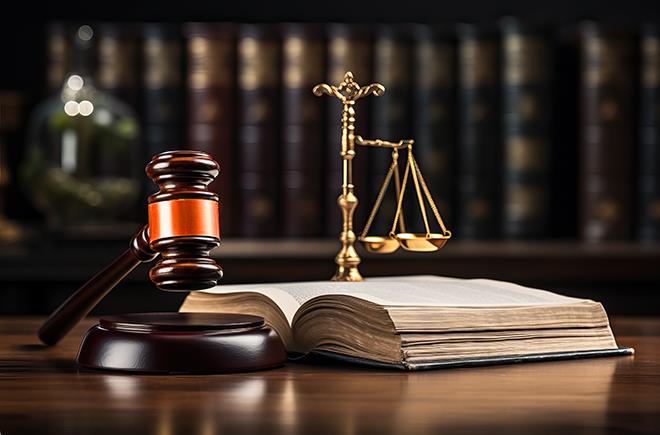Printed Publication as Prior Art: PTAB Guidance, Practical Considerations for Patent Holders and Patent Challengers

Welcome! Strafford is now BARBRI! The expert courses you know from the trusted global leader in legal education.
Course Details
- smart_display Format
On-Demand
- signal_cellular_alt Difficulty Level
Intermediate
- work Practice Area
Patent
- event Date
Friday, March 29, 2024
- schedule Time
1:00 p.m. ET./10:00 a.m. PT
- timer Program Length
90 minutes
-
This 90-minute webinar is eligible in most states for 1.5 CLE credits.
-
Live Online
On Demand
The CLE course will provide an in-depth discussion for counsel on the history and current state of the law when a non-patent prior art reference qualifies as a "printed publication" for purposes of a patentability challenge. The panel will discuss recent Federal Circuit, district court, and PTAB decisions and the emerging guidance for assessing whether a reference is sufficiently "publicly accessible" to be considered a "printed publication" under 35 U.S.C. Section 102. The panel will also review strategic approaches for demonstrating or disputing that a reference qualifies as printed publication prior art.
Faculty

Ms. Hartenstein's practice focuses on patent litigation matters across numerous industries, from medical devices to computer software. She practices before U.S. district courts, the U.S. Patent and Trademark Office's Patent Trial and Appeal Board, and the U.S. International Trade Commission. Ms. Hartenstein also maintains an active patent prosecution and counseling practice. As a registered patent attorney, she has experience preparing and prosecuting U.S. patent applications directed to various software and hardware innovations. In addition, Ms. Hartenstein provides services in other intellectual property-related areas, including IP due diligence, licensing drafting, and trade secret misappropriation litigation.

Mr. Johnson is one of the firm's primary contacts on practice before the USPTO's Patent Trial and Appeal Board, where patentability of issued patents can be challenged. He regularly represents clients as both petitioners and patent owners at the Board. He further works as an advocate for clients in appeals from Board proceedings at the Federal Circuit. Mr. Johnson is a registered patent attorney and has been representing inventors before the USPTO since 2006. Utilizing his background as an electrical engineer and experience as a database programmer, he has drafted and prosecuted hundreds of patent applications directed toward software and hardware innovations, with significant emphasis on autonomous vehicles and robotics, statistics, small-scale device fabrication, data signal communication, RFID, and medical devices. Mr. Johnson also provides services in other IP-related areas including IP due diligence, licensing negotiation and review, and patent portfolio review and strategy development. Mr. Johnson regularly speaks on the intersection of law and technology, particularly AI and robotics, including teaching IP-related classes at Carnegie Mellon University's Robotics Institute.
Description
The question of what constitutes prior art in a printed publication is significant in many patent validity challenges. A patent claim may be held unpatentable if the claimed invention was, among other things, "patented, [or] described in a printed publication ... before the effective filing date of the claimed invention." A patentability challenge based on non-patent literature must be supported by evidence that a reference qualifies as a printed publication.
In recent decisions, the Federal Circuit has reiterated that whether a reference is a printed publication is a "case-by-case inquiry into the facts and circumstances surrounding the reference's disclosure to members of the public." In one example, the court affirmed the PTAB's holding that the FDA advisory meeting minutes, transcripts, and slides were sufficiently accessible to persons of ordinary skill in the art because the materials at issue were available through hyperlinks provided in a Notice in the Federal Register, among other things.
Listen as our authoritative panel of patent attorneys addresses the public accessibility standard and evidence relied upon by courts and other tribunals in considering whether a reference qualifies as "printed publication" prior art. The panel will also offer guidance for demonstrating (or arguing against) printed publication prior art.
Outline
- Public accessibility standard
- Meeting the standard
- Klopfenstein factors
- Recent PTAB and federal court decisions
- Printed publication issues
- Documents stored in public/private libraries
- Conference proceedings
- Oral and slide presentations
- Websites, online texts, or documents
- Patent file histories
- Copyright notice
- Video recordings/web video clips
- Others
- Guidance for demonstrating (or arguing against) printed publication prior art
Benefits
The panel will review these and other priority issues:
- How is the PTAB evaluating public accessibility standards and evidence?
- What lessons can patent counsel draw from recent decisions when assessing print publications as prior art?
- What role do "confidentiality expectations" or restrictions on dissemination play in the public accessibility analysis?
Unlimited access to premium CLE courses:
- Annual access
- Available live and on-demand
- Best for attorneys and legal professionals
Unlimited access to premium CPE courses.:
- Annual access
- Available live and on-demand
- Best for CPAs and tax professionals
Unlimited access to premium CLE, CPE, Professional Skills and Practice-Ready courses.:
- Annual access
- Available live and on-demand
- Best for legal, accounting, and tax professionals
Unlimited access to Professional Skills and Practice-Ready courses:
- Annual access
- Available on-demand
- Best for new attorneys
